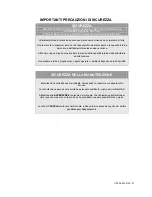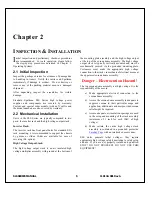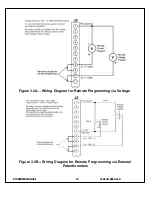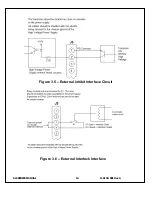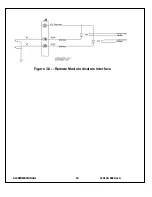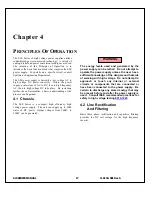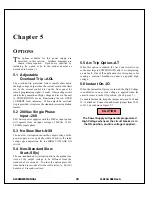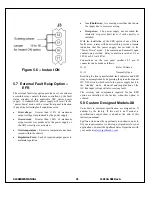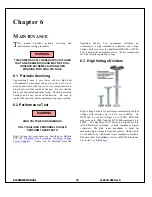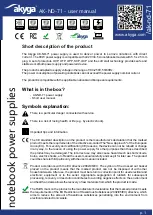
SLS SERIES MANUAL
8
118132-001 RevA
NOTE:
The SLS Series is equipped with a slow start
circuit that ramps the output up to its maximum
setting in approximately 6 seconds after the red
HIGH VOLTAGE ON switch is depressed.
K)
To terminate the generation of output power, depress
the green HIGH VOLTAGE OFF switch. In the
HIGH VOLTAGE OFF mode the power supply’s
fault, front panel monitoring and interface circuits are
still active.
L)
To turn off the power supply, turn the circuit breaker
to the off position (0).
NOTE:
If a power supply or system fault occurs, the
unit will revert to the POWER DOWN mode, where
the output power will be turned off. The green HV
OFF lamp will not be illuminated; a red latched fault
should be indicated on the fault diagnostic panel. To
clear and reset the fault, depress the green HV OFF
switch or cycle the AC input power.
AFTER TURN OFF, DO NOT TOUCH ANYTHING
CONNECTED TO THE HV OUTPUT UNTIL THE
CAPACITANCE HAS BEEN DISCHARGED!
LOAD CAPACITANCE MAY BE DISCHARGED BY
SHORTING TO GROUND WITH A SAFETY
DISCHARGE STICK.
THE VOLTMETER ON THE POWER SUPPLY
FRONT PANEL DOES NOT READ THE OUTPUT
VOLTAGE WHEN THE AC LINE POWER IS
TURNED OFF, EVEN IF A CHARGE STILL
EXISTS ON THE LOAD.
ALWAYS OPERATE THE UNIT WITH THE
CHASSIS TOP COVER ON.
A fan maintains safe operating temperature in the inverter
chassis by drawing air over the circuit components. The
cover must be on in order to direct the air flow over the
areas that need cooling. In operation, the unit must be
placed so that the air intake and the fan exhaust are clear
of obstructions.
3.2 Standard Features
Whenever possible, electrical isolation should be used
when interfacing with any high voltage power supply.
For power control signals such as EXTERNAL
INTERLOCK, HIGH VOLTAGE OFF, and HIGH
VOLTAGE ON, isolated relay contacts should be used.
For status and control signals such as HIGH VOLTAGE
ON, HIGH VOLTAGE OFF, and EXTERNAL INHIBIT,
etc., opto-isolation should be used. If possible, analog
programming and monitoring signals should be isolated
via analog isolation amplifiers. Spellman application
engineers are available to assist in answering any
questions. All interface cables should be properly
shielded. All power supply signals should be referenced
to the power supplies signal ground on the external
interface connecter.
REMOTE PROGRAMMING:
Allows remote
adjustment of the output voltage and current via an
external voltage source. In local control (front panel
control), jumpers are installed on the 25 pin D
external interface connecter J3 at the rear of the
chassis between J3-10 and J3-11 for voltage control
and between J3-8 and J3-9 for current control.
For remote programming, the jumpers are removed and a
positive polarity, ground referenced signal, from 0Vdc to
10Vdc, is applied to the appropriate terminals.
Programming signals should be referenced to J3-1, signal
ground. By adjusting the voltage source from 0Vdc (zero
output) to 10Vdc (full rated output), the desired output
can be selected. See Figure 3.2A on page 13 for the
wiring diagram and specifications.
An alternate method of controlling the output remotely is
by using external resistance, such as a potentiometer or a
resistor network. For remote control the jumpers are
removed and the desired resistor configuration installed.
See Figure 3.2B on page 13 for the wiring diagram.
REMOTE MONITOR:
Test points are made
available at the 25 pin D connecter on the rear of the
chassis for monitoring the voltage and current output.
The test points are always positive regardless of the
output polarity where 0Vdc to 10Vdc equals 0 to
100% of the output,
1%. Test points have an output
impedance of 5k ohms. See Figure 3.3 on page 14
for the test point designation.
WARNING
WARNING
CAUTION




